Yes, you absolutely can fly from the USA to Cuba! As an American myself, I’ve navigated the process and experienced the vibrant culture of Cuba firsthand. For many years, Cuba felt off-limits to Americans due to complex political relations dating back to 1959. However, despite these historical challenges, traveling to Cuba from the United States is indeed possible, and often easier than you might think.
When I first stood in line at Cuban immigration, a mix of excitement and apprehension washed over me. Like many Americans, I carried some ingrained uncertainty about traveling to Cuba. Is it really allowed? Am I doing everything correctly? These thoughts are common, but the reality is that with the right preparation, Americans can legally and readily explore Cuba.
The immigration agent’s call to step forward snapped me back to the present. Handing over my passport, I couldn’t help but feel a sense of bridging divides. I’m here, I’m American, and I want to connect. This sentiment stayed with me throughout my journey, shaping my interactions and deepening my appreciation for the Cuban people and their resilience.
“Stamp?” the agent inquired, holding the stamp poised above my passport. Cuba, like Israel, offers the option to forgo a passport stamp.
To stamp or not to stamp? Will US immigration question it? Could it cause issues down the line? My passport is still so new!
But the allure of a Cuban stamp, a tangible mark of this unique experience, was too strong to resist.
“Sí,” I confirmed.
The stamp landed firmly in my passport. “Welcome to Cuba.”
Thinking about exploring Cuba beyond Havana? Don’t miss my guide to the best places to visit in Cuba for more inspiration!
This guide is updated for 2024.
Is it Legal for Americans to Fly to Cuba?
Yes, it is legal for Americans to travel to Cuba. Despite common misconceptions, the regulations are in place to guide how Americans travel, not to outright ban it. You can obtain a Cuban travel visa and book direct flights from the United States to Cuba. The process of getting a visa is simpler than you might imagine.
Key Questions About US to Cuba Travel:
-
Can Americans use credit cards in Cuba? No, American credit cards and ATMs do not work in Cuba. US-issued cards will be blocked if used in Cuba. It’s essential to bring enough cash for your entire trip. Learn more about managing money in Cuba as an American.
-
Is internet access available in Cuba? Internet access exists but is limited and can be expensive. Typically, you’ll need to purchase a prepaid wifi card and use designated public hotspots. Find detailed information on internet access in Cuba.
-
Can you fly directly to Cuba from the USA? Yes, nonstop flights to Havana are available from various US cities, including Miami, New York, Fort Lauderdale, and Atlanta. A Cuban visa is mandatory to board these flights. Find out how to secure your Cuban visa.
-
Did US policy changes make Cuba travel harder? While there have been policy shifts, Americans can still travel to Cuba legally. The “people-to-people” visa category was removed, but the “support for the Cuban people” category serves as a viable alternative and maintains similar ease of access. Current regulations are largely consistent with those under the Obama administration.
Legally Traveling to Cuba from the USA: There are several lawful ways for Americans to visit Cuba. You can travel under a general license after obtaining a visa, or opt for routes through third countries like Mexico – a common practice for some US citizens.
Let’s delve into the legal pathways for US passport holders seeking to experience Cuba.
Cuba Travel for Americans in 2024: Entry Requirements
As of April 2024, Cuba has lifted all COVID-19 related entry requirements.
Travel to Cuba is now restriction-free in terms of health protocols. You no longer need to present a negative COVID-19 test or proof of vaccination to enter Cuba. Quarantine upon arrival is also not required.
It is advisable to bring your own face masks and hand sanitizer, as these items may be scarce in Cuba.
For the most up-to-date and detailed information, refer to the US State Department’s Cuba travel advisory.
Important Health Travel Advice: Avoid traveling if you have been exposed to COVID-19, are feeling unwell, have tested positive, or are awaiting test results. Similarly, refrain from traveling with anyone who is sick. Prioritize your health and the health of others.
To understand the historical context and evolving regulations surrounding American travel to Cuba, keep reading!
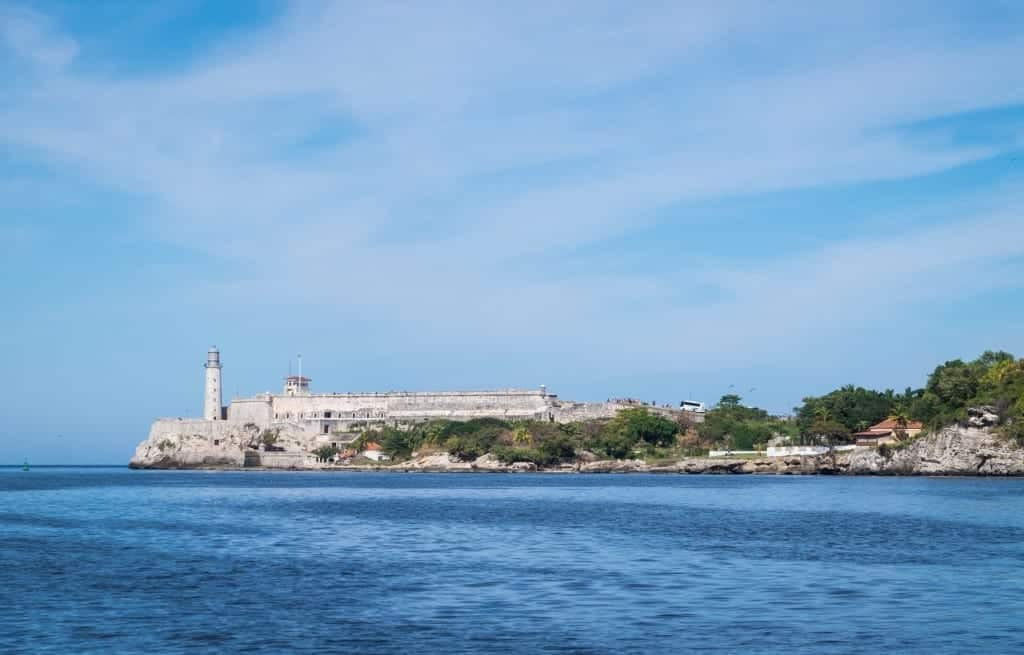 A picturesque view of the Havana lighthouse against a clear blue sky, showcasing the city's coastal charm.
A picturesque view of the Havana lighthouse against a clear blue sky, showcasing the city's coastal charm.
How to Get a Cuban Visa for Americans: General License Explained
To travel to Cuba legally as an American, you must secure a Cuban visa in advance. This visa is often referred to as a “general license,” the official term used by the Cuban government for travel authorization. Understanding the visa categories is key.
The Office of Foreign Assets Control (OFAC) outlines 12 authorized categories for Cuba travel:
- Family visits
- U.S. government, foreign government, and intergovernmental organizations official business
- Journalistic activity
- Professional research and professional meetings
- Educational activities
- Religious activities
- Public performances, clinics, workshops, athletic and other competitions, and exhibitions
- Support for the Cuban people
- Humanitarian projects
- Activities of private foundations or research or educational institutes
- Exportation, importation, or transmission of information or informational materials
- Certain export transactions
The “People-to-People Activities” category, previously under “Educational Activities” and a popular choice, was eliminated under the Trump administration.
While group tours can be a great way to experience Cuba, many international tour operators may not accommodate American citizens due to licensing complexities. However, specialized Cuba tour operators exist that handle the necessary paperwork for Americans, often focusing on travel that aligns with categories like “journalistic or religious activities.”
What about cruises to Cuba? Cruise travel to Cuba has been suspended, and it’s uncertain when or if these routes will resume.
The Easiest Visa Route: “Support for the Cuban People”
For most Americans seeking a tourist-like experience in Cuba, obtaining a general license under the “Support for the Cuban people” category is the recommended and simplest approach. This category allows for independent travel while ensuring compliance with US regulations.
Working with a specialized travel service like ViaHero simplifies this process significantly. ViaHero specializes in crafting custom itineraries designed by local experts. For Cuba, a ViaHero itinerary acts as valid documentation for the “Support for the Cuban People” general license, ensuring your trip meets the requirements.
ViaHero excels in Cuba travel by also assisting with in-country transportation – often a challenging aspect of independent travel in Cuba – and guiding you through the Cuban visa application. Learn more about their services here.
With a valid visa, direct flights from the USA to Cuba are readily available! Airlines like American Airlines offer flights from cities like Miami, New York, Fort Lauderdale, and Atlanta directly to Cuba. Skyscanner is a helpful resource for finding affordable flights from the US to Cuba. Note that some flight search engines may not display Cuba flights, so Skyscanner can be particularly useful.
The Pink Tourist Card: If you are flying to Cuba directly from the United States, you’ll need to acquire a “pink tourist card,” obtainable at the US airport during check-in or at your airline’s ticket counter. While you can purchase it in advance, it’s generally not necessary and incurs extra processing fees.
The Green Tourist Card: For travelers flying to Cuba via another country, such as Mexico, the “green tourist card” is required instead of the pink card. More details on this option follow below.
Traveling to Cuba Without a US Visa: The Indirect Route
Another way for Americans to visit Cuba involves a legal loophole: flying to Cuba from a third country, bypassing the need for a US-issued visa beforehand. Cancún, Mexico, is a popular departure point due to frequent and affordable flights to both Cancún and Havana, with a short flight duration of just over an hour between them.
Flights to Havana are also available from other Mexican cities like Mexico City and Mérida, as well as Canadian cities like Toronto. Skyscanner can help you find budget-friendly flights to Cuba via these routes.
Choosing this indirect route means you won’t need to secure a Cuban visa in advance. Instead, you’ll need to obtain a Cuban tourist card, or “green tourist card,” at the departure airport, typically from your airline’s ticket desk.
In Cancún airport, airlines like Interjet sell tourist cards at their check-in counters for around $25 USD.
Cuban immigration authorities do not require Americans to have a US-issued visa. Their primary concern is the tourist card. Furthermore, Cuba will not stamp your passport if you request it, offering an added layer of discretion for US travelers concerned about travel records.
Essential Tips for Americans Visiting Cuba
Travel insurance is mandatory for entry into Cuba. While proof of insurance may not always be requested, it’s wise to have a printed copy ready.
Restrictions on Spending: Americans are prohibited from spending money at certain Cuban establishments listed on the US State Department’s restricted list. This list primarily includes government-owned hotels. Always verify if an establishment is on the restricted list before booking. Access the full Cuba Restricted List here.
Receipt Keeping: It’s advisable to retain receipts from your Cuba trip for up to five years after your return, as the US government reserves the right to request them to verify your travel activities.
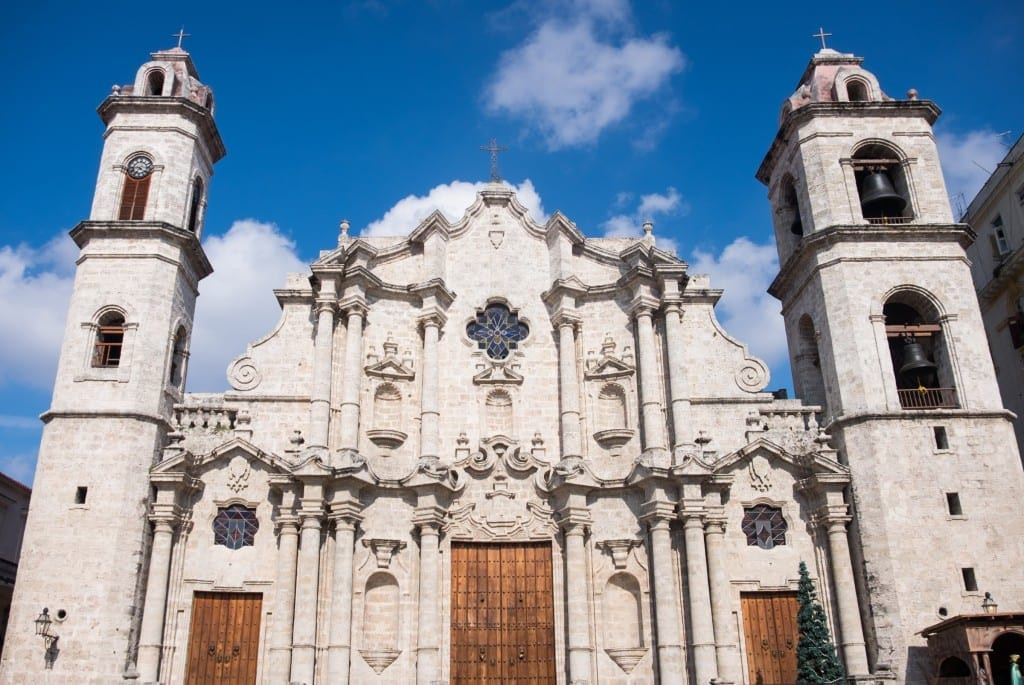 A charming church in Old Havana, bathed in sunlight against a clear blue sky, representing the historical architecture of the city.
A charming church in Old Havana, bathed in sunlight against a clear blue sky, representing the historical architecture of the city.
Managing Money in Cuba as an American Traveler
Navigating finances in Cuba as an American requires careful planning. US-issued credit and debit cards, as well as ATMs, are unusable in Cuba. This means you must bring all the cash you anticipate needing for your entire trip with you.
During my trip, I had a slight advantage as I was traveling with my boyfriend, Charlie, a British citizen, and our friend Klara, a Czech-Canadian dual citizen. They have access to ATMs and credit cards in Cuba. However, even for non-Americans, ATMs in Cuba can be unreliable, often not accepting MasterCards.
Cash is King: The most reliable way for Americans to manage money in Cuba is to bring US dollars or Euros and exchange them for Cuban currency upon arrival.
(As of early 2024, both USD and EUR offer favorable exchange rates in Cuba.) Currency exchange in Cuba primarily occurs at banks, often with long queues. A more convenient option is to exchange currency at your accommodation. Airport exchange services are available but typically offer less favorable rates.
Emergency Cash Strategy: If traveling solo or only with other Americans, I recommend keeping enough US dollars hidden for transportation to Havana Airport and a flight to Cancún, just in case of unexpected financial constraints. This acts as a crucial safety net, given the lack of electronic payment options for Americans.
Cash Safety: Traveling with large amounts of cash necessitates robust security measures. Consider using a Speakeasy Travel Supply scarf with a hidden pocket for discreetly carrying bills. A portable safe, like the Pacsafe Travelsafe, is also invaluable for securing valuables in your accommodation.
Creative hiding spots within luggage can also add security. Unexpected places, like inside maxi pads or tampon applicators, can deter casual theft.
Cuban Currency: Cuba operates with two currencies: the Cuban Convertible Peso (CUC) and the Cuban National Peso (CUP). Tourists primarily use CUC, which is pegged to the US dollar. CUP is valued significantly lower and mainly used by locals. CUC notes feature monuments, while CUP notes depict faces.
Ensure you exchange all Cuban currency back before leaving Cuba, as it cannot be exchanged outside of the country.
Accommodation in Cuba: Casas Particulares vs. Hotels
While hotels exist in Cuba, particularly larger properties and beach resorts, for a more authentic and economically impactful stay, casas particulares are highly recommended.
Casas particulares are private rooms or apartments rented out by Cuban families in their homes. They are often very affordable, averaging around $25 per room, and offer a direct way to support Cuban citizens. I paid $25 for a one-bedroom casa in Viñales and $50 for a two-bedroom apartment in Havana.
I thoroughly enjoyed my stays in both casas. In Havana, I stayed in this spacious two-bedroom apartment near Old Havana for $50 a night. In Viñales, I chose this charming one-bedroom suite in a casa particular, complete with a relaxing porch.
Airbnb is a useful platform for finding and booking casas particulares. Explore casa options in Havana here.
The Casa Network: One of the significant advantages of staying in casas particulares is the interconnected network they provide. Hosts can arrange onward accommodations in other Cuban destinations, such as Trinidad or Cienfuegos, and often assist with transportation.
Casa hosts can also organize tours, currency exchange, and provide essential services like drinking water, making your travel experience smoother and more locally integrated. This network of local connections is a unique and enriching aspect of travel in Cuba.
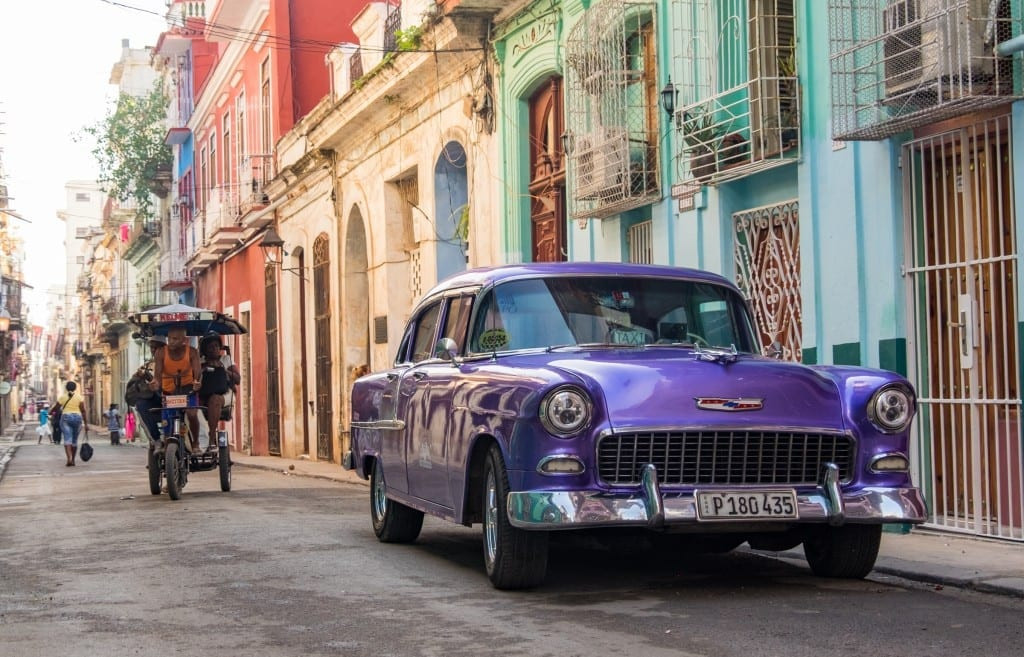 A vibrant Havana street scene featuring a shiny purple classic car, embodying the iconic imagery of Cuba.
A vibrant Havana street scene featuring a shiny purple classic car, embodying the iconic imagery of Cuba.
Experiencing Havana: First Impressions
What comes to mind when you picture Cuba? Classic cars, colonial architecture, lively music, and perhaps a touch of faded grandeur? Havana is all of this and more.
Here are some observations from my time in Havana:
Diversity of People: Cuba’s population is remarkably diverse. You’ll encounter people of African, European, and Asian descent. Cuban identity is multifaceted and defies simplistic stereotypes.
Classic Cars are Real: The iconic classic cars of Cuba are indeed a prominent feature. Alongside these vintage beauties, you’ll also see Russian Ladas and more modern vehicles. The most meticulously maintained classic cars often serve as taxis for tourists. However, be aware that older cars contribute to air pollution.
Distinct Cuban Spanish Accent: Cuban Spanish has a unique cadence, often dropping the letter ‘s’ in pronunciation. It’s a distinctive accent unlike any other Spanish dialect I’ve encountered.
Havana Club Rum is Ubiquitous: Cuban rum, especially Havana Club, is deeply ingrained in Cuban culture. Rum is readily available and enjoyed in various cocktails. Consider visiting the Museo del Ron or simply relax with a classic Cuban cocktail. Try a Havana Special or a Piña Colada at places like Chacon 162 or El Louvre Bazar.
Vegetable Carts Dominate: Street carts laden with onions, peppers, and tomatoes are a common sight. Vegetable variety can be limited, with these three being staples in Cuban cuisine.
NBA Jersey Popularity: NBA jerseys, particularly Michael Jordan and LeBron James jerseys, are frequently seen throughout Havana, indicating a strong interest in basketball.
Sparse Grocery Stores: Grocery store shelves often appear sparsely stocked, with limited variety and few recognizable brands, especially American ones.
Treatment of Dogs: Unfortunately, I observed instances of harsh treatment of dogs, which was disheartening.
Musical Talent Abounds: Cubans possess incredible musical talent, and music is an integral part of daily life. Even casual street performances can be exceptionally high quality. Cubans seem to embrace life’s joys, and music is a key expression of this.
These are just surface-level observations. To truly understand Cuba, engaging in conversations with Cubans is essential.
Connecting with Cubans: Conversations and Insights
A bright pink Corvette taxi brought us to a colorful building in Central Havana for a highly-rated seafood cooking class booked through Airbnb Experiences.
Odalys, our host, greeted us with prepped vegetables and displayed three impressive lobsters. We were learning to make lobster enchiladas, a Cuban interpretation without tortillas – essentially lobster stewed in a flavorful sauce.
Her friend, Ivan, acted as our translator. “You can each chop the vegetables. Small pieces.”
 Three pairs of hands expertly chopping raw lobster, still in its shell, during a Cuban cooking class.
Three pairs of hands expertly chopping raw lobster, still in its shell, during a Cuban cooking class.
We diced peppers, garlic, and onions. Odalys then demonstrated how to prepare the lobster tails, removing the intestine – a step new even to me, a New Englander familiar with lobsters.
We sautéed the lobster with the vegetables, and Odalys added tomato sauce and cayenne pepper. The familiar aroma of onions, peppers, and tomatoes filled the air – the base of so many Cuban dishes.
It dawned on me: the limited vegetable carts, the repetitive ingredients… perhaps these core vegetables are staples because they are the most consistently accessible in Cuba. This realization was a stark reminder of the constraints of daily life in Cuba.
As the lobster simmered, we prepared tostones (fried plantains) and enjoyed rum with lime. Ivan, casually using his phone throughout the class, explained he was among the first Cubans with 4G access, part of a recent rollout in late 2019.
Ivan’s excellent English and idiom usage impressed us. He explained he learns from “the weekly package,” El Paquete Semanal – a uniquely Cuban offline internet. This terabyte of data, filled with TV shows, movies, and apps, is collected and distributed across Cuba via physical networks for about $1. The BBC featured an article on El Paquete Semanal. It’s internet without the internet, a testament to Cuban ingenuity.
The lobster enchiladas were extraordinary – fresh, flavorful, and perfectly spiced. Served with tostones, rice, and tomatoes, it was the best meal of my Cuba trip.
Over lunch and rum, I asked Ivan a question that had been on my mind for years: “How do Cubans feel about Americans?”
“Of course, we like Americans,” he replied, instantly easing my tension. “We just don’t like your president.”
“Fair enough,” I laughed. “Were you happy when Obama visited Cuba?”
“Obama was more of the same,” he responded.
“More of the same? He did more to open Cuba than any president before him.”
“It made no difference to us,” Ivan reiterated. Point taken. Political changes at the top don’t always translate to immediate, tangible changes on the ground for ordinary citizens.
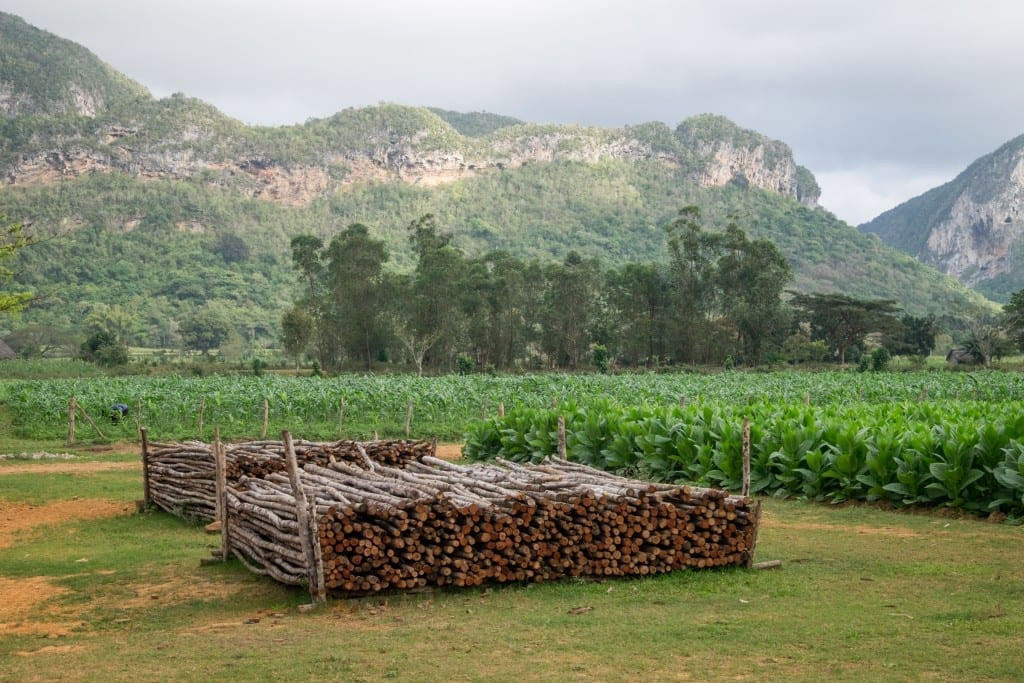 Stacks of wood in Viñales, with the region's distinctive mountains and tobacco fields in the background, showcasing the rural beauty of Cuba.
Stacks of wood in Viñales, with the region's distinctive mountains and tobacco fields in the background, showcasing the rural beauty of Cuba.
Airbnb in Cuba: Fostering Economic Opportunity
In 2022, the average monthly salary in Cuba was estimated at $175 USD. This incredibly low income underscores the vital role of tourism in Cuba, particularly when it directly benefits individuals.
Odalys’s cooking class and casa operation exemplified this entrepreneurial spirit. She and her husband rent rooms, have created appealing aesthetics, and collaborate with local drivers. It’s a testament to Cuban resourcefulness.
Our Havana apartment owner, Gladys, also demonstrated entrepreneurialism by offering water and currency exchange services for a small profit.
Odalys charges $39 per person for her cooking class. Even after fees and expenses, the profit likely significantly supplements her income.
While Airbnb has faced criticism for its negative impacts in some cities, in Cuba, it provides crucial economic opportunities for locals. In a country with limited earning potential, Airbnb empowers Cubans to generate income directly from tourism.
It’s essential to support these local economies and hope that Cuban entrepreneurs can sustain their livelihoods through tourism in the years to come.
Internet Access in Cuba: Managing Expectations
While you see “free wifi” signs in Cuba, internet access is far from universally free or easily accessible. “Free wifi” typically means a wifi hotspot exists, where you can use prepaid wifi cards that you have to purchase.
Wifi cards can be bought at Etecsa stores or some hotels for about $1 per hour. Street vendors also sell them at inflated prices, saving you the often long lines at official stores.
Wifi hotspots are easily identifiable by clusters of people using their phones. Popular spots include outside the Hotel Ingleterra in Old Havana, Etecsa stores, and certain parks.
Occasionally, you might find a location with truly free wifi, but these are rare.
Surprisingly, my US AT&T phone plan had service in Cuba, though data was prohibitively expensive at $3 per minute for calls, $0.50 per text, and $1.30 per photo or video.
Crucially, avoid accessing any banking websites or apps, including PayPal and Venmo, while in Cuba. Doing so can trigger account freezes due to US sanctions and restrictions. This can cause significant disruptions upon your return home.
 Refreshing Mojitos served in a bar, capturing the vibrant social scene in Cuba.
Refreshing Mojitos served in a bar, capturing the vibrant social scene in Cuba.
Karaoke in Cuba: A Humorous Cultural Mishap
Karaoke isn’t a Cuban pastime, but my friend Harvey, known as H-Bomb, has a knack for finding karaoke anywhere. He discovered La Esencia bar in Vedado hosting karaoke on Wednesdays.
Harvey, a karaoke enthusiast in 65 countries, introduced himself in Spanish and launched into “La Bamba,” to the delight of the Cuban locals.
While we joined in with some English songs, the real entertainment was the hilariously disorganized English songbook. Songs and artists were wildly mismatched, creating absurd pairings:
- Bob Marley singing Shania Twain’s “Man! I Feel Like a Woman”
- Tom Jones belting Britney Spears’ “Oops, I Did It Again”
- Janis Joplin tackling Village People’s “YMCA”
- Barbra Streisand rocking AC/DC’s “You Shook Me All Night Long”
- Coolio covering Christina Aguilera’s “Genie in a Bottle”
- Ray Charles grooving to Reel 2 Real’s “I Like to Move It Move It”
- Whitney Houston crooning David Lee Roth’s “Just a Gigolo”
- John Denver tackling Pink Floyd’s “Another Brick in the Wall”
- Tony Bennett serenading Madonna’s “Like a Virgin”
- And finally, Shania Twain asking “Who Let the Dogs Out?” originally by Baha Men
The sheer absurdity of these pairings had us in tears of laughter!
Cuba: A Challenging Travel Destination
It’s important to be honest: I found Cuba to be a challenging travel destination. After the initial excitement, the daily realities of Havana became stressful.
Constant taxi solicitations, incessant catcalling when walking alone, and dangerously uneven streets were wearing. The noise, heat, and unpleasant smells were pervasive. While beautiful, the classic cars contribute significantly to air pollution.
Finding good food in Havana was also difficult. While my friend Ayngelina’s Havana restaurant guide was helpful, consistently good dining was elusive. Even a decent breakfast spot we found mysteriously closed for the rest of our trip.
Everything felt like a hassle. Bus tickets booked online were inexplicably sold out upon arrival, with drastic rebooking without notice. I often felt the need to retreat to my apartment to escape the city’s intensity.
Beyond Havana, the constant worry of financial vulnerability as an American, unable to access money in emergencies, was unsettling.
It wasn’t the challenges themselves that were off-putting; I’ve traveled to many difficult places. Lebanon and Albania, for example, had their own travel hurdles, but I enjoyed them immensely. And it wasn’t the lack of internet – I welcomed a digital detox. Even remote, unconnected Guyana, despite its discomforts, captivated me with its natural beauty.
The issue was that the positives – the people and music – weren’t enough to outweigh the cumulative stresses of daily life in Cuba. Many experienced travelers I’ve spoken with share similar sentiments about Cuba.
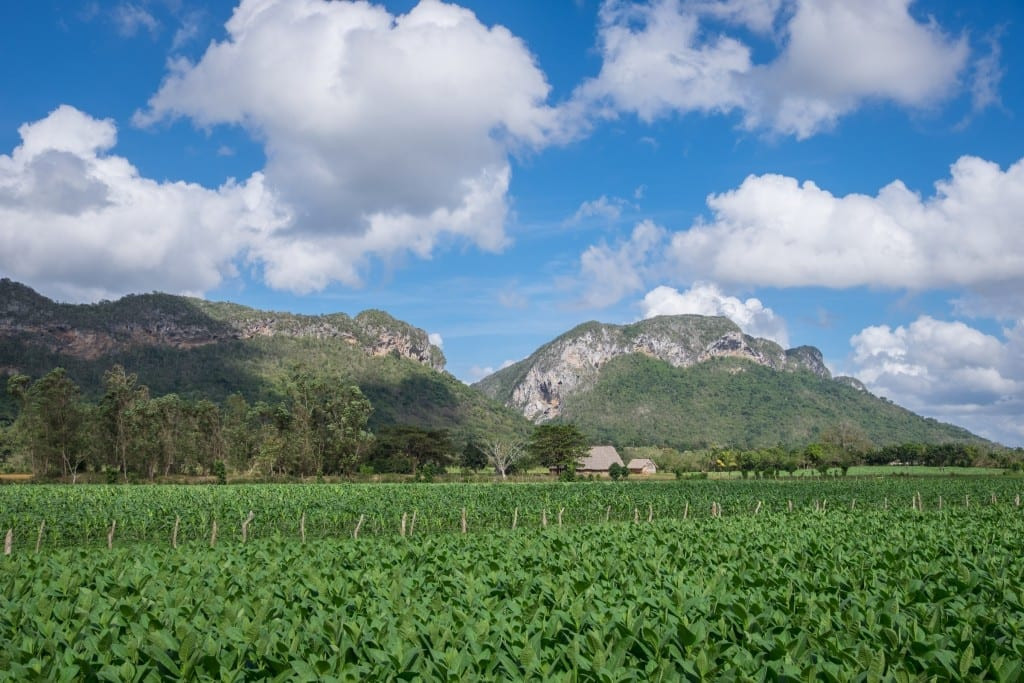 Verdant tobacco fields and dramatic mountains in Viñales, under a blue sky with scattered clouds, representing the tranquil countryside of Cuba.
Verdant tobacco fields and dramatic mountains in Viñales, under a blue sky with scattered clouds, representing the tranquil countryside of Cuba.
Viñales: A Welcome Escape
My Cuba trip was at risk of becoming a disappointment until we reached Viñales. This lush, green region was a balm for the soul.
Traveling from Havana to Viñales by bus was problematic due to sold-out tickets. We opted for a colectivo (shared taxi). After a chaotic wait at the bus station, we were ushered into a classic car packed with travelers.
The drive transformed into breathtaking scenery as we entered Viñales. Limestone karst mountains rose from vibrant green tobacco fields, reminiscent of landscapes in Thailand.
Viñales town is small and tourist-oriented, yet refreshingly relaxed compared to Havana. Bars like 3 Jotas (now Bar Tapas 3J) offered a laid-back atmosphere, even allowing you to self-pour rum into your piña colada!
The next day, we explored the Viñales valley with Osniel, a local guide from our casa. We opted to walk rather than ride horses, due to concerns about horse welfare.
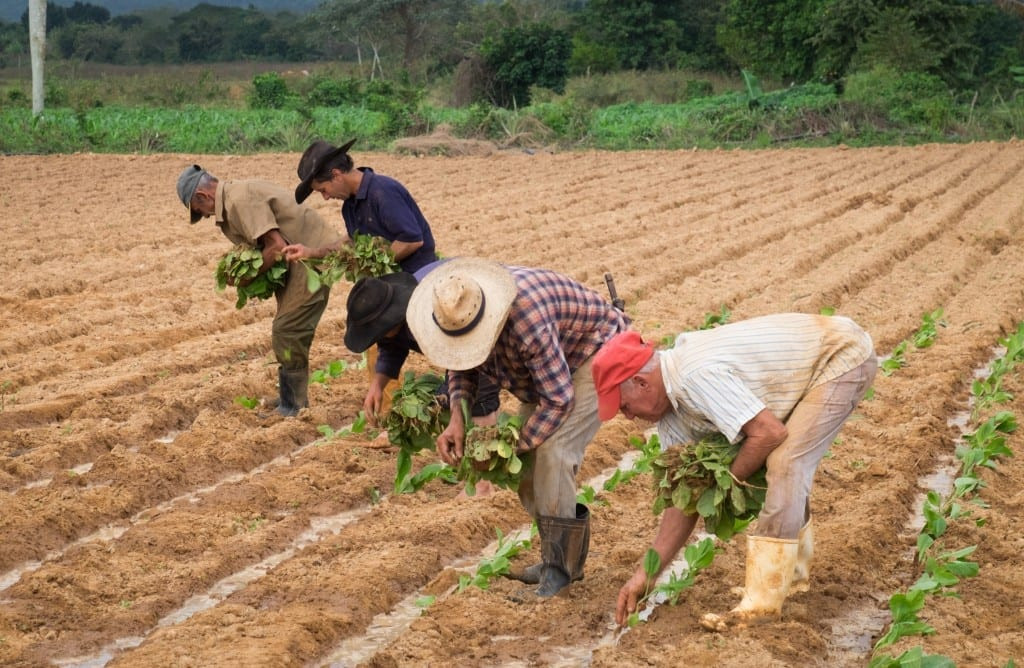 Four men diligently working in tobacco fields in Viñales, highlighting the agricultural traditions of the region.
Four men diligently working in tobacco fields in Viñales, highlighting the agricultural traditions of the region.
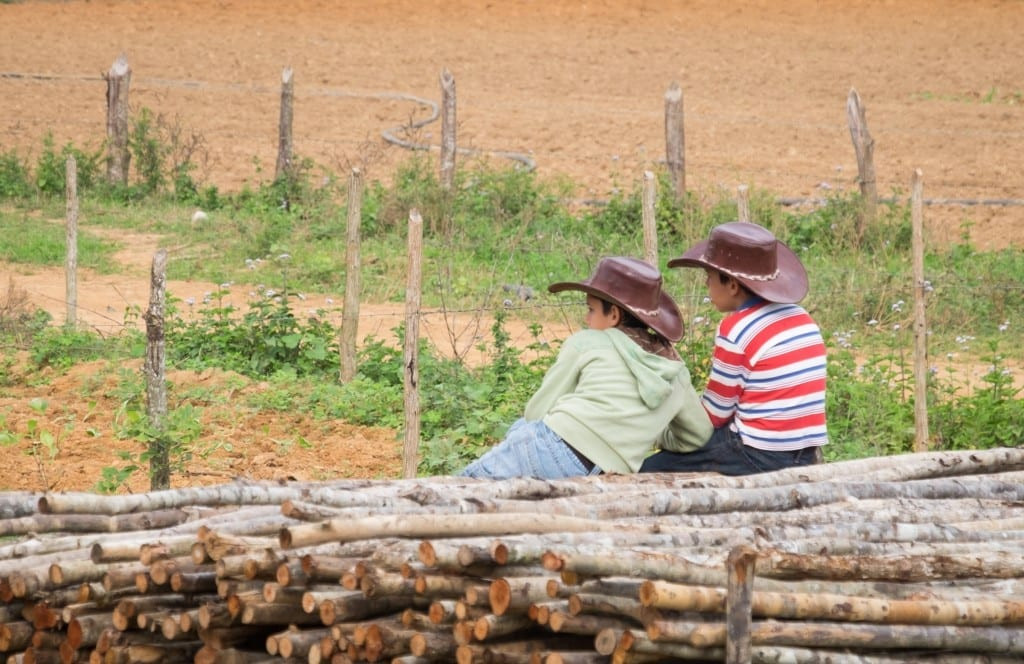 Two young boys in cowboy hats sitting on stacks of wood in Viñales, with their backs to the camera to respect their privacy, capturing a moment of rural Cuban life.
Two young boys in cowboy hats sitting on stacks of wood in Viñales, with their backs to the camera to respect their privacy, capturing a moment of rural Cuban life.
We visited a tobacco farm, learning about coffee and rum production and purchasing cigars. Tourism has significantly impacted this rural area, but in a positive way, supporting local farmers and communities. The atmosphere was welcoming and unhurried.
A pregnant dog and a tiny kitten, named Montecristo by Charlie, added to the charm of the farm visit. We hiked to a cave, enjoyed lunch at the farm, and savored the tranquility of the countryside.
That evening, we finally enjoyed delicious ropa vieja, far superior to my home-cooked attempts, slow-cooked beef with the familiar Cuban trinity of onions, peppers, and tomatoes.
Viñales was a pure delight and salvaged my Cuba trip.
Cuba Travel: Key Takeaways
Osniel arranged our return to Havana Airport in a classic car. Looking at the departure board, I was struck by the number of US destinations – Miami, New York, Atlanta – and how unaware many people are that flying from the USA to Cuba is entirely possible.
There is no justifiable reason for the ongoing US travel restrictions to Cuba. It’s an outdated policy that serves no constructive purpose. I’ve traveled extensively and witnessed far worse behavior from countries with close US ties.
Cuba poses no threat to the US. The embargo is pointless. If the US were serious about sanctions, there are more impactful targets, such as Russia or Saudi Arabia. Even countries with active genocides are more easily accessible than Cuba.
I hope President Biden will continue to normalize relations, building on Obama’s progress.
For future Cuba travel, I’d recommend a shorter stay in Havana – perhaps two full days, possibly in a less hectic neighborhood like Vedado.
Would I return to Cuba? I’m uncertain. While Viñales and Trinidad’s beaches were highlights for my friend Klara, she found the rest of Cuba overwhelmingly challenging. I suspect I would feel similarly.
Landing back in Mexico City brought a wave of relief. Tacos and reliable internet were welcome, but the biggest relief was regaining financial security and shedding the constant unease of being financially stranded.
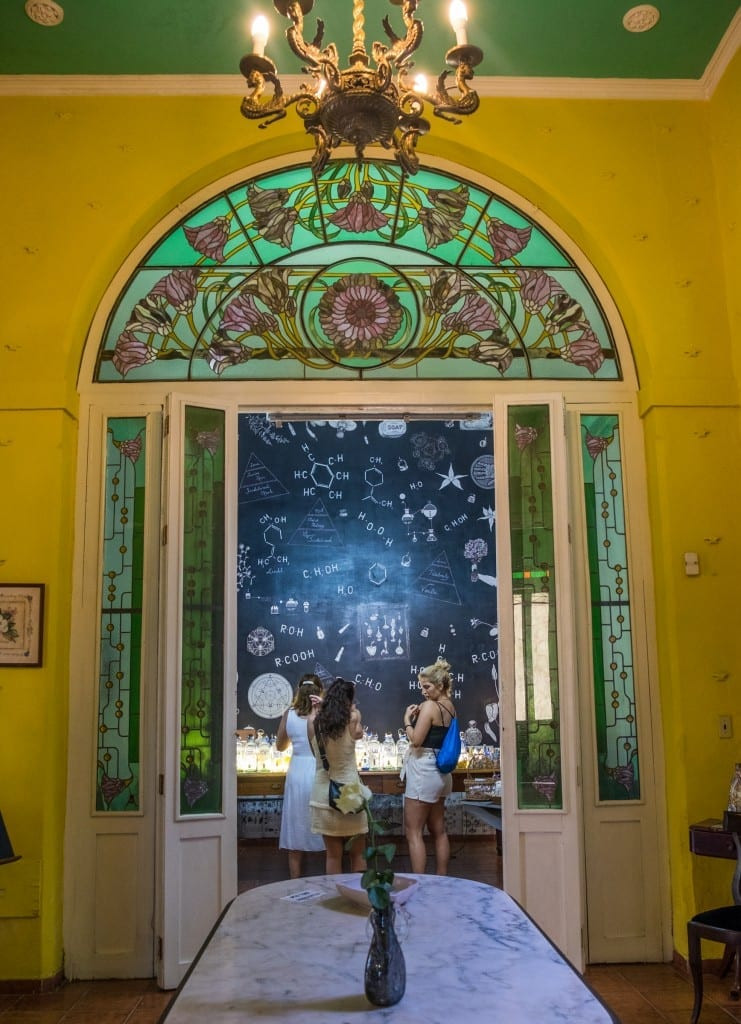 Intricate green and purple stained glass windows in the Museum of Perfume, Havana, adding an artistic touch to the city's cultural scene.
Intricate green and purple stained glass windows in the Museum of Perfume, Havana, adding an artistic touch to the city's cultural scene.
A Post-Cuba Banking Caution
Back in Mexico, I reimbursed Charlie for trip expenses, innocently writing “CubaMerida” in the transaction memo. Big mistake.
My bank flagged the transaction, delaying it for “a few days.” Then came an email inquiring about “Cuba” in the memo. Had I been spending money in Cuba?
Oops.
I replied that it was reimbursement for photography services (partially true).
The bank followed up, noting a previous transaction with “flights” in the memo. “Did you also pay for flights to Cuba?”
Frustratingly, I forwarded flight confirmations from Prague to Boston – unrelated flights I had reimbursed earlier.
Sharing this on Facebook revealed similar stories. Apparently, even mentioning “Cuba” can trigger account freezes. One friend’s Venmo was frozen for a “Cuban sandwich” reimbursement!
Lesson learned: Americans can fly from the USA to Cuba, but be extremely cautious about mentioning Cuba afterward in financial contexts.
Explore More About Cuba:
Discover More of the Caribbean:
Essential Cuba Travel Information
For Americans, ViaHero is highly recommended for obtaining a Cuban visa and planning a compliant trip. They offer customized itineraries and handle complex bookings, ensuring your trip qualifies under the “Support for the Cuban People” category. Learn more here.
In Havana, this two-bedroom apartment near Old Havana was a great base, though noisy due to bus traffic. Find more Havana accommodations here.
The Airbnb Experience cooking class with Odalys is highly recommended for a fantastic Cuban meal and cultural insight.
For Havana dining recommendations, Ayngelina’s Havana restaurant guide is invaluable. Paladar Omar and Genesis were highlights.
In Viñales, this casa particular suite was excellent, with friendly hosts. See more Viñales casas here.
Viñales tours can be booked through casa hosts like Osniel.
Travel insurance is mandatory for Cuba. Ensure your policy is valid in Cuba. (Note: World Nomads no longer covers Cuba.)
Have you traveled to Cuba? Share your experiences and thoughts in the comments below!